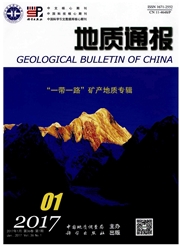

 中文摘要:
中文摘要:
从流域尺度水资源承栽能力及其有限性、可变性和上下游关联性的角度,探讨了黑河流域下游区生态环境变化的影响阈,阐明了不同水文年中游区的安全引水量和不同目标下下游区的生态环境修复对水资源的需求阈。基于多年平均地表径流量37.8×10^8m^3/a的安全引水量为13.97×10^8m^3/a和枯水年份(95%保证率)的安全引水量为10.14×10^8m^3/a下游区初步改善生态环境的生态需水量为8.01×10^8m^3/a.提出了中游区经济社会可持续发展的水资源保障阈,即未来20年生产生活安全需水量介于22×10^8-23×10^8m^3/a之间。在此基础上,阐明了在中游区经济社会稳定持续发展目标约束下确保黑河流域下游区生态环境不断改善的流域水资源优化配置模式及对策。
 英文摘要:
英文摘要:
This paper discusses the influence threshold of the eco-environmental variation in the lower reaches of the Heihe River valley in the contexts of the bearing capacity, limitation and variability of water resources and relations of the upper and lower reaches. It also elucidates the safe water diversion quantities from the middle reaches in different hydrologic years and the threshold of demand of eco-environmental rehabilitation with different goals in the lower reaches for water resources. The safe water diversion quantity for the perennial mean surface runoff of 3.78 billion m^3/a is 1.397 billion m^3/a and that for low water years is 1.014 billion m^3/a (95% confidence level); then based on those data, the water quantity needed for the preliminary improvement of the eco-environment in the lower reaches is estimated to be 801 million m^3/a. In addition, the paper also discusses the water resources guarantee threshold for sustainable economic and social development. The safe water demand for production and living in the future 20 years will range between 2.2 and 2.3 billion m^3/a. On that basis, the paper proposes a water resources distribution optimization model and countermeasures to ensure the steady improvement of the ecoenvironment in the lower reaches of the Heihe River valley under the constraints of the goals of sustainable economic and social development in the middle reaches.
 同期刊论文项目
同期刊论文项目
 同项目期刊论文
同项目期刊论文
 期刊信息
期刊信息
